Disclosure: This article contains affiliate links. We may earn a commission from purchases at no extra cost to you, which helps our travel content.
I've wandered through many sacred spaces in my travels, but cycling the hallowed grounds around Ypres delivered a different kind of spiritual experience altogether. The Belgian spring air carried whispers of history—and the scent of fresh waffles—as I pedaled past trenches where young men once huddled in terror. This modest corner of Belgium holds both unspeakable tragedy and surprising beauty, all best explored at the gentle pace of a bicycle. And trust me, after sampling the region's legendary chocolate and beer, you'll appreciate the exercise.
Planning Your Ypres Cycling Adventure
Ypres (or Ieper, as the locals call it) makes an ideal base for battlefield cycling, with rental shops right in the town center offering everything from basic city bikes to rugged trail models. I rented from Fiets Paradise near the Grote Markt for €15 per day—a bargain considering the freedom it provided.
Before setting out, I downloaded the Ypres Salient cycling map app, which proved invaluable when my sense of direction failed me (as it invariably does after the second Belgian beer). The area offers several well-marked routes ranging from the leisurely 20km 'Peace Route' to the more challenging 45km 'Passchendaele Circuit.'
Packing light is essential, but don't skimp on rain gear. My packable rain jacket saved me during an unexpected afternoon shower—Belgium's weather changes faster than I can devour a chocolate croissant. I also recommend sturdy cycling gloves and a small handlebar bag for essentials, snacks, and the inevitable chocolate purchases.
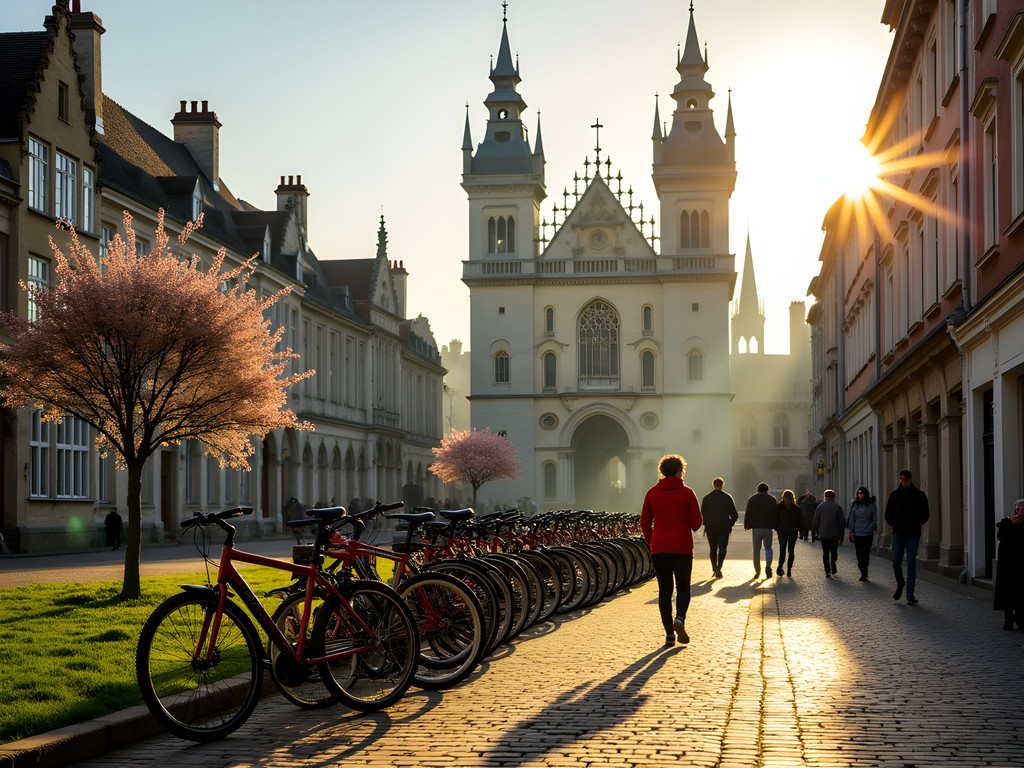
💡 Pro Tips
- Download the free Ypres Salient cycling map app before arrival
- Book bike rentals a day ahead during peak season (April-October)
- Pack layers—morning fog gives way to afternoon sun, then sometimes evening drizzle
The Menin Gate and Memorial Route
My first cycling route began after witnessing the Last Post ceremony at the Menin Gate—a nightly ritual honoring the fallen that's been performed since 1928 (with the exception of the German occupation years). Setting out early the next morning, I followed the memorial route that winds past Hellfire Corner toward Hill 62.
The morning mist hanging over the landscape created an almost ethereal quality as I pedaled past farm fields where artillery once thundered. Every few kilometers, small Commonwealth war cemeteries appeared like solemn islands amid the green expanse. These meticulously maintained grounds, with their uniform white headstones, offer peaceful places for reflection.
At the Hooge Crater Museum, I paused to explore the recreated trenches and remarkable collection of war artifacts. The museum café provided a welcome coffee break and the chance to chat with a local historian who pointed me toward several hidden bunkers not on my map.
Cycling this route requires intermediate stamina—not for the distance (about 30km round-trip) but for the rolling hills that punctuate the otherwise flat terrain. My hydration backpack proved essential, especially when the spring sun emerged in full force.
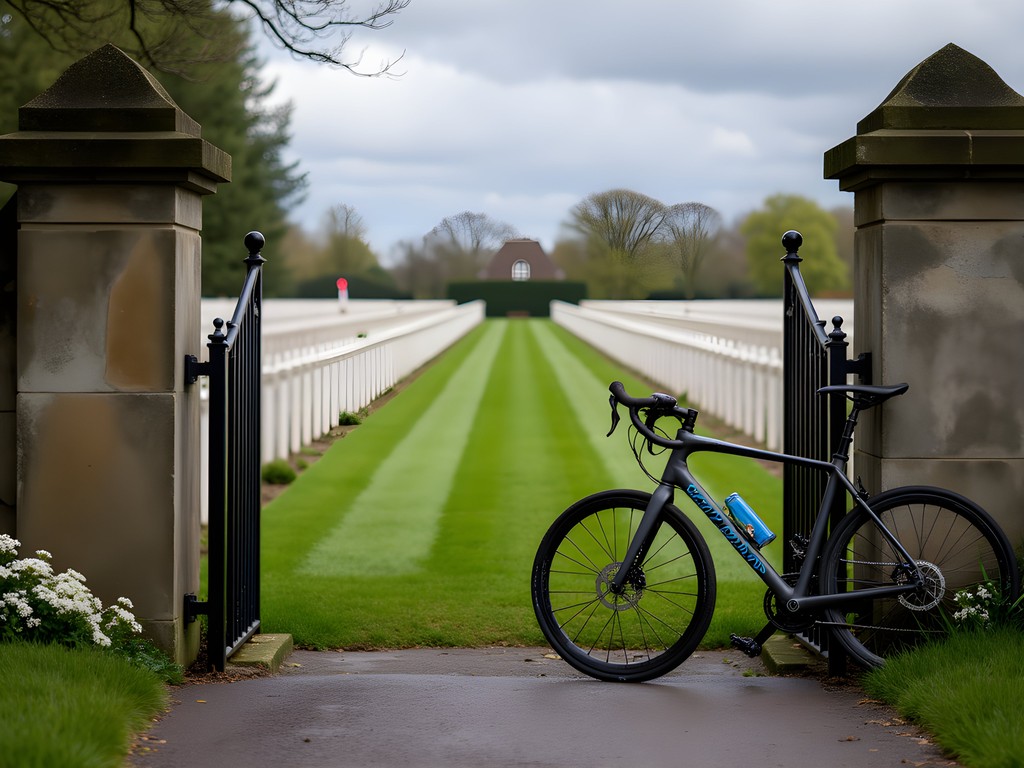
💡 Pro Tips
- Attend the Last Post ceremony at the Menin Gate (8pm nightly) before your cycling day
- The Hill 62 section has steep climbs—consider an e-bike if you're concerned about stamina
- Many sites close for lunch (12:30-2pm), so plan accordingly
Culinary Rewards: Abbey Breweries and Countryside Bakeries
One unexpected joy of cycling the Ypres countryside is discovering the region's culinary treasures. After a morning navigating the solemnity of war sites, I found myself craving both sustenance and something to lift my spirits.
In the tiny village of Watou, just north of Ypres, I discovered St. Bernardus Brewery—a former cheese factory with connections to the Trappist monks of Westvleteren. Their abbey-style beers proved the perfect reward after 25km of cycling. The brewery tour costs €15 and includes tastings, though I limited myself knowing I had to navigate back to Ypres!
But the true revelation came in the form of a countryside bakery near Zonnebeke. Tucked behind an unassuming farmhouse facade, Bakkerij Verstraete produces the most extraordinary pastries I've encountered outside of Paris. The owner—a third-generation baker—still uses recipes that fed Belgian soldiers during WWI. His speculoos cookies became my cycling fuel for the remainder of the trip.
For picnic supplies, I filled my insulated food container with local cheeses and preserves from the Thursday market in Ypres' main square. Nothing tastes better than local Gouda and fresh bread enjoyed beside a peaceful canal that once marked the front lines.
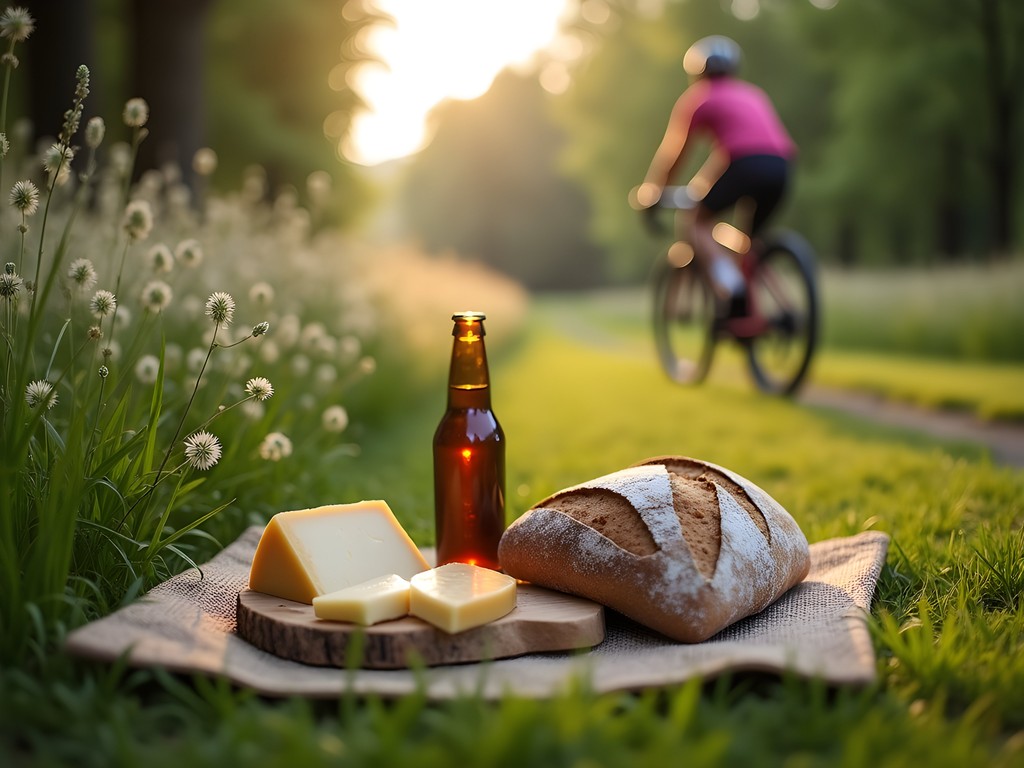
💡 Pro Tips
- Most countryside establishments close on Mondays and Tuesdays
- Carry cash—many smaller villages don't have ATMs and some establishments don't accept cards
- Ask locals for bakery recommendations—the best are often unmarked and known only to residents
Nature and Recovery: The Peace Route
The most surprising aspect of cycling around Ypres is witnessing how thoroughly nature has reclaimed these battle-scarred lands. The aptly named Peace Route (Vredesroute) showcases this regeneration, winding through forests and wetlands that were once decimated by artillery fire.
The route follows the Palingbeek, a never-completed canal that became a strategic position during the war. Today, it's a verdant corridor where kingfishers dart across the water and wildflowers blanket former trenches. I stopped frequently to photograph butterflies resting on concrete bunkers—nature's poetry written across the remnants of war.
At Bellewaerde Ridge, I locked my bike to explore the network of preserved trenches on foot. The morning dew had soaked the grass, and I was grateful for my waterproof hiking shoes as I navigated the muddy paths. These comfortable shoes have accompanied me from Patagonian trails to Ukrainian church steps, never letting me down when terrain turns challenging.
The Peace Route also passes several reconstructed farmhouses where interpretive signs explain how local families returned after the war to rebuild. One such farm now operates as a cheese producer, offering samples and fresh buttermilk to passing cyclists. The elderly owner shared stories passed down from her grandmother about returning to find nothing but shell holes where their home once stood.

💡 Pro Tips
- The Peace Route is well-marked with hexagonal signs featuring a dove symbol
- Early mornings offer the best wildlife viewing opportunities along the Palingbeek
- Bring binoculars—the area has become a birdwatching hotspot with over 100 identified species
Final Thoughts
As I cycled back into Ypres on my final evening, the setting sun gilded the rebuilt spires of St. Martin's Cathedral—structures painstakingly reconstructed from rubble after the war. This resilient landscape offers a masterclass in healing, where beauty and remembrance coexist in delicate balance. Exploring by bicycle allowed me to experience this region's complex emotional terrain at a pace that honors both its history and recovery.
The next morning, before returning my rental bike, I made one final pilgrimage to the Menin Gate. Among the 54,000 names engraved there, I found a 'J. Adams'—no relation that I know of, but the coincidence felt meaningful. I tucked a small speculoos cookie wrapped in paper beside his name (probably against regulations, but sometimes pastry chefs must follow their hearts).
Whether you come for the history, the cycling, or like me, the unexpected discovery of monastic beer recipes and century-old pastries, Ypres rewards the traveler who moves slowly enough to listen for echoes of the past while celebrating the vibrant present. Just remember to pack rain gear—and an appetite for both adventure and Belgian chocolate.
✨ Key Takeaways
- Ypres offers well-marked cycling routes for all ability levels, making battlefield exploration accessible without a car or tour
- Spring visits provide the perfect balance of comfortable cycling weather, fewer crowds, and spectacular wildflowers blooming across former battlefields
- The combination of solemn history and culinary excellence creates a uniquely Belgian experience of remembrance and celebration
📋 Practical Information
Best Time to Visit
April-June or September-October
Budget Estimate
€200-300 for a weekend (including bike rental, accommodation, and meals)
Recommended Duration
2-3 days
Difficulty Level
Intermediate

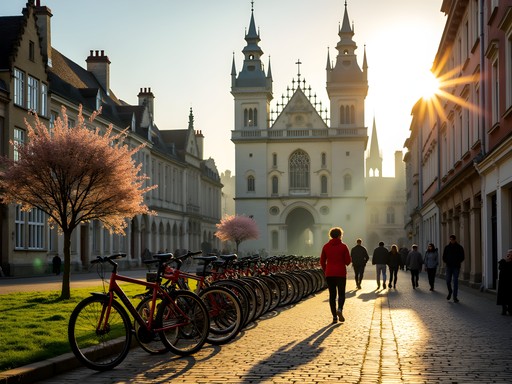
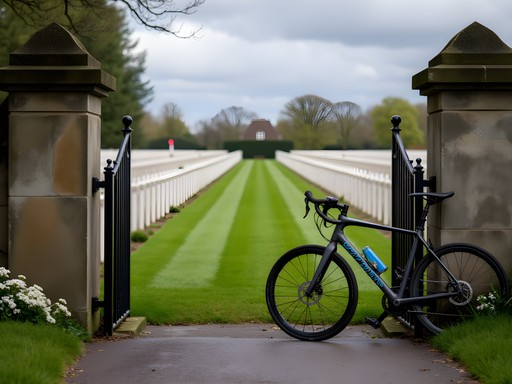
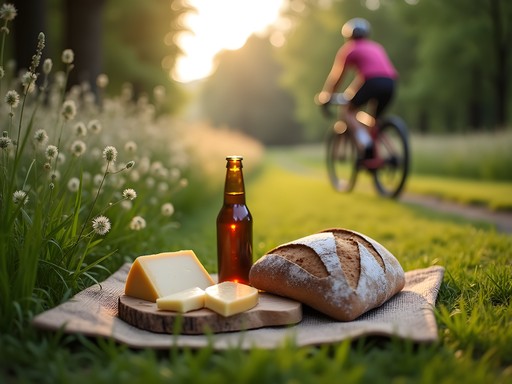



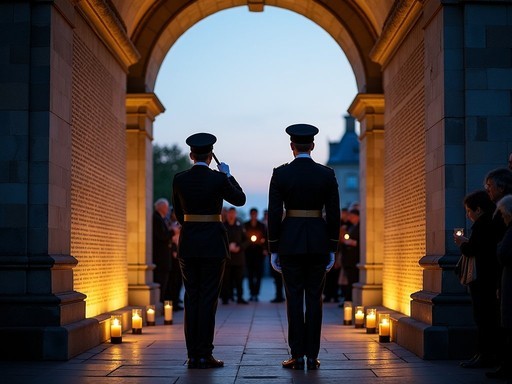







Comments
tripbuddy
Just got back from Ypres last week and followed some of the routes mentioned here. The contrast between peaceful countryside and the weight of history is something you have to experience firsthand. We stayed at a small B&B run by a local historian who enhanced our understanding immensely. One practical tip: the Last Post ceremony at Menin Gate happens EVERY night at 8pm without fail - absolutely worth planning your day around. Also, many of the smaller museums close earlier than you might expect (around 5pm), so plan accordingly. The countryside bakeries mentioned were indeed amazing - we stopped at one near Polygon Wood that served the most incredible fresh bread and local cheese. Perfect cycling fuel!
greenguide
Are there guided cycling tours available or is it better to go self-guided? First-timer to Belgium here!
escapeexplorer
I did a guided half-day tour and then went solo the next day. Highly recommend starting with a guide to get the historical context!
Marco Suzuki
Excellent piece on combining physical activity with historical reflection. Having researched battlefield tourism extensively, I find cycling offers the ideal pace to appreciate both landscape and historical context. The Peace Route you mentioned provides fascinating insights into ecological recovery - the land's resilience mirrors the human resilience of the region. For those planning a visit, I'd recommend allocating at least 3 days to properly experience the various routes. The local tourism office offers excellent free GPS tracks of themed routes that can be downloaded beforehand. The 'Iron Harvest' phenomenon (where farmers still regularly unearth WWI munitions) is also worth learning about before visiting - it provides context for why certain areas remain off-limits and underscores the lasting impact of the conflict.
wavevibes
Did you rent bikes there or bring your own? Planning a similar trip and wondering about the logistics. Also curious if the routes are well-marked or if you needed special maps?
tripbuddy
Not the author but I was there last month - there are several good rental shops right in Ypres center. I used cycling map which was super detailed and waterproof. Most routes have numbered junctions that make navigation pretty straightforward.
bluemaster
Those abbey breweries sound like the perfect reward after a day of cycling!
Bryce Diaz
Natalie, your post brought back so many memories. I cycled through Ypres last autumn and was equally moved by the juxtaposition of peaceful countryside against such profound history. The silence at Tyne Cot Cemetery was deafening in its own way. One tip for others planning this journey - I found that starting early (around 7am) at the Menin Gate gave me time for quiet reflection before the day tourists arrived. And don't miss St. George's Memorial Church if you're interested in Commonwealth connections. The small museum there holds personal stories that won't make the guidebooks.
greenguide
Is October too late in the year for cycling there? I'm planning a trip but worried about the weather.
Bryce Diaz
October was actually perfect - fewer tourists and the fall colors were beautiful. Just pack layers and a light rain jacket. The routes are mostly flat so even light rain isn't a big problem.
escapeexplorer
This looks amazing! Adding Ypres to my bucket list immediately. Those battlefield routes sound so meaningful.
moonone
If you're going in spring like Natalie did, pack layers! I went in April and experienced four seasons in one day. The wind can be pretty intense in some of the more exposed battlefield areas. Also, don't miss the interactive museum In Flanders Fields in Ypres before you set out - gives so much context to what you'll see on the routes.
oceanstar
Great tip about the museum! We did that first day and it made all the difference understanding what we were seeing on the rides.
nomadstar
Love this! Those countryside bakeries saved me on my ride. That chocolate bread from the place near Polygon Wood... still dream about it!
Jennifer Rodriguez
This post really captures the essence of cycling in Ypres. I did a budget trip there last year and found cycling to be not just economical but the most meaningful way to experience the landscape. The Memorial Route was particularly impactful - there's something about approaching these solemn sites gradually by bicycle that gives you time to process the history. For anyone planning a trip: the local tourism office offers free route maps, and many of the smaller museums along the way offer discounts if you arrive by bike. Don't miss the evening Last Post ceremony at the Menin Gate after your ride - it's been happening daily since 1928 (except during WWII).
Venture X
Premium card with 2X miles, $300 travel credit, Priority Pass